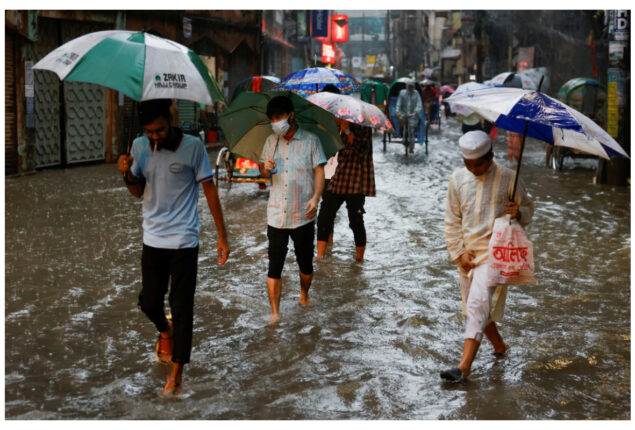Nine people killed in Bangladesh by Cyclone Sitrang
Cyclone Sitrang crashed into Bangladesh's southern shore, cutting off communications and power....

24 Bangladeshis dies in Cyclone Sitrang, and millions fled
Cyclone Sitrang struck Bangladesh on Tuesday, forcing the evacuation of roughly a million people from their homes and resulting in at least 24 fatalities, according to officials.
Cyclones, which are similar to hurricanes in the Atlantic and typhoons in the Pacific, are a common threat to the area, but scientists believe that climate change is likely making them more violent and frequent.
The massive weather system Sitrang made landfall in southern Bangladesh late on Monday, but authorities were able to evacuate roughly a million people in advance.
On Tuesday, about 10 million people were without electricity in coastal zones, and several southern states’ schools were closed.
At least 24 people died, largely from being struck by falling trees, according to police and government officials, with two of those deaths occurring in the north on the Jamuna River when a boat capsized in squalls.
Another worker from Myanmar who was on a ship perished after jumping from the deck, according to an official.
“We still have not got all the reports of damages,” government official Jebun Nahar told AFP.
According to provincial fire department commander Abdullah Pasha, eight persons are still missing from a dredging boat that capsized during the storm late Monday night in the Bay of Bengal close to the largest industrial park in the nation at Mirsarai.
“Strong wind flipped the dredger and it sank instantly in the Bay of Bengal,” he told AFP, adding that divers were searching for survivors.
According to Kamrul Ahsan, secretary of the Disaster Management Ministry, those who were evacuated from low-lying areas such as isolated islands and river banks were placed in hundreds of multi-story cyclone shelters.
“They spent the night in cyclone shelters. And this morning many are heading back to their homes,” he said.
According to Ahsan, the storm caused “wrecked or damage” to close to 10,000 dwellings, while about 1,000 shrimp farms were destroyed by floodwaters.
According to officials, in other instances, police had to persuade locals who were hesitant to leave their houses.
Even in the capital city of Dhaka, hundreds of kilometers from the storm’s heart, trees were uprooted.
Cities including Dhaka, Khulna, and Barisal were flooded by the country’s widespread heavy rains, which dumped 324 millimeters (13 inches) of rain on them on Monday.
The controversial relocation of 33,000 Rohingya refugees from Myanmar from the mainland to a storm-prone island in the Bay of Bengal ordered them to stay indoors, but there were no reports of casualties or property damage, according to officials.
After cutting off electricity and telecoms, the cyclone toppled trees and caused widespread panic on the southern island of Maheshkhali.
“Such was the power of the wind we could not sleep in the night because of the fear that our homes will be destroyed. Snakes entered many homes. Water also inundated many homes,” said Tahmidul Islam, 25, a resident of Maheshkhali.
Vegetable crops were severely damaged in the worst-affected Barisal region by torrential rains and strong winds, according to district administrator Aminul Ahsan.
Thousands of people were evacuated to more than 100 rescue centers in the neighboring Indian state of West Bengal on Monday, according to officials, but there were no reports of property damage, and people began to return home on Tuesday.
Before Cyclone Yaas, a Category 2 hurricane, struck India’s east coast in 2017 with winds up to 155 kilometers per hour (96 miles per hour), over a million people were evacuated from the area.
When Cyclone Amphan struck in 2020, it was the second “super cyclone” to be recorded over the Bay of Bengal. It caused millions of people to be affected and killed more than 100 people in Bangladesh and India.
Better forecasting and more efficient evacuation preparation have significantly decreased the number of fatalities from such storms in recent years. The deadliest reported event occurred in 1970 and killed thousands of people.
Catch all the World News, Breaking News Event and Latest News Updates on The BOL News
Download The BOL News App to get the Daily News Update & Follow us on Google News.